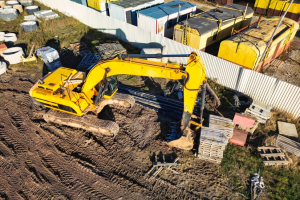8 Tips for Press Release Headlines that Grab Attention
According to research, 71% of journalists claim press releases are their favorite form of content to receive from marketers and brands.
You’ve got a great story to tell, but how do you make sure that the journalists who could help share it see it? Pitching your story to the wrong person or at the wrong time can be frustrating and fruitless.
But don’t worry. Keep reading to learn how to craft press release headlines that will make journalists take notice. From using keywords to standing out in a crowded inbox, this guide has you covered.
1. Short and Sweet
The shorter your headline the better it will be received by reporters. Keeping your words concise makes it easier for the journalist to begin reading and understand what the news is about.
The best press release headline is not wordy or complicated. Choose words that most people would understand and try not to mix different languages.
If possible include numbers rather than spelling out each number as this adds interest to your headline without increasing word count. For example: “New Study Reveals Americans Feel $15 Billion Better About Their Finances Than they Did This Time Last Year!”
2. Be Specific
Be specific about the new information your company’s latest announcement holds. A good way to do this is by using numbers in your headline such as ‘Biggest’ or ‘Most’.
Numbers add credibility and will help reporters better focus their article on that aspect of your business.
And make sure to steer clear of industry jargon. If journalists can’t understand what your business does or products within two sentences, then it’s unlikely they’ll continue reading through the rest of the release.
Avoid using complex jargon such as ‘industry best practices and stick with simpler terms like ‘new product line’ instead.
3. Ask Questions
Questions can help journalists understand the significance of your news by demonstrating how it affects them and their readers. For example, writing a headline such as “How will [your company] make our lives easier?” tells journalists that they can write an article that directly relates to their reader base.
This is important because whatever benefits the product has to offer are ones their readers will be able to relate to.
Ask questions that could be answered with a quote from your spokesperson or by analyzing the positive effects your announcement will have on its stakeholders. Avoid asking questions that require a ‘yes’ or ‘no’ answer as this will not give the journalist enough information to write an interesting story.
4. Create Mystery and Urgency
One effective way of piquing a journalist’s interest is to write a headline that has them asking questions and searching for answers. One way to do this is by using the words ‘What’, ‘Who’, and ‘Why’ in your headline.
An example would be: “Who was behind the attempt on the life of Senator Johns?”.
These three words alone can direct journalists towards various angles such as who attempted such an act, why they did it, what his/her motives were, etc. By writing a press release with headlines that focus on these kinds of questions, you make it easier for reporters to find more information about your subject, which you can later provide in your release.
Also, focus on creating a sense of urgency.
For press releases that revolve around growth, acquisitions, or partnerships it is important to indicate how these effects affect the journalist and their readers by adding impact. A good way of doing this is to create a sense of urgency by including words such as ‘announces’, ‘reveals’, or ‘unveils’ in your headline which demonstrates that something new is happening.
Media outlets are more likely to cover announcements with newsworthy headlines because they will be able to get more clicks on the article than their competitors do.
5. Position Words to Describe the Release’s Importance
The words ‘Breaking’ and ‘Exclusive’ are positioning statements that help journalists understand how timely and relevant your press release is. Using these kinds of terms ensures they will make time to read it.
This is because this particular information is something they cannot find elsewhere or details a first/only occurrence of its kind.
And don’t forget to include keywords for the search engines. This is very useful if someone reads a snippet of your press release and wants to view it in its entirety.
Using words such as “news,” “announcement,” and “study” are great examples of how you can make your press release more visible for people who use search engines.
6. Be Clear About Your Company’s Role
Writing a headline that states who/what your company is making it easier for reporters to grasp why their audience would be interested in reading about this news over all others. Ask yourself “Would my readers care if I was involved with this breaking story?” Is a simple way to decide whether or not you should write about something.
And don’t oversell. The purpose of writing a press release is to provide information, not sell it.
Avoid using words such as “exclusive,” “amazing,” and “one-of-a-kind;” they can make your headline come across as being over the top. Instead, be factual by reporting what happened rather than just saying how great something was or will be.
This way journalists can draw their conclusions about why this announcement is important.
7. It’s All About the Numbers
Incorporating numbers into your press releases is an excellent way to help journalists understand the significance of your announcement. This will make it easier for them to justify why their readers should read it.
For example, you could say “Approximately 100 individuals attended the event” as opposed to “100 people came to the event.”
The latter makes it sound as if all of those 100 people were journalists and therefore, increases its newsworthiness whereas the former statement is very bland and doesn’t give much information.
Including numbers in your press release headline can help journalists write about your announcement more quickly and with excitement.
8. Don’t Forget Internal Links
One of the most easily missed opportunities when writing press release headlines is including links that connect directly with one another. For example, if your headline reads ‘Breaking News:
[Company] announces new product line’ and later in the release, there is a paragraph that says ‘[Company] decided to add this new product to its line after noticing an increase in demand over the last four years.
By linking these two headline concepts together with a single link, you can provide journalists with insight into why your company decided to make this particular product and how it will benefit them in sales.
Another reason internal links are useful is that they help reporters more easily visualize what the story will look like when written.
If they see that all of their ideas can be connected through one or more links, it becomes easier for them to understand your news and what angle to take while writing about it.
An Example of a Good Press Release Headline
“Company XYZ Launches New Product Line”. This headline is short, sweet, and gets the point across.
It also mentions who Company XYZ is, how long they have been around, what kinds of products they offer, and their newest one.
While numbers are not included, the writer has provided additional information to help journalists and readers connect what Company XYZ is announcing with their other products and how it could potentially benefit consumers.
An Example of a Bad Press Release Headline
“Company Releases New Product Line That Will Be Used By Millions Of People All Over The World”. This headline sounds like an advertisement.
While the writer does provide numbers, they are not specific and therefore useless to journalists who would need exact statistics to work within their articles.
Including only one sentence about why this product was launched is not enough information for news outlets to want to write about it.
On average, journalists spend 5-10 seconds on headlines before determining if something is worth sharing.
Therefore, it’s important to make sure your press release headline provides all of the information journalists need to start writing about what you are announcing as soon as they receive your press release.
If you do not include specific numbers how can journalists determine what is newsworthy? If you do not explain why your company is making this announcement, who will want to know about it?
Want to know how much press releases cost? Check out the PR Newswire Pricing to find out.
Write High Performing Press Release Headlines
There are many different methods that can ensure you have headlines for press releases that journalists will read. That’s why we hope these press release headline tips have given you some guidelines to follow.
From including keywords, being clear about your company’s role, and linking related points together with internal links, writing effective press release headlines is more than just providing a starting point.
They are about providing insights into why people should be interested in your company and your news.
Want more articles like this? Check out our blog!








